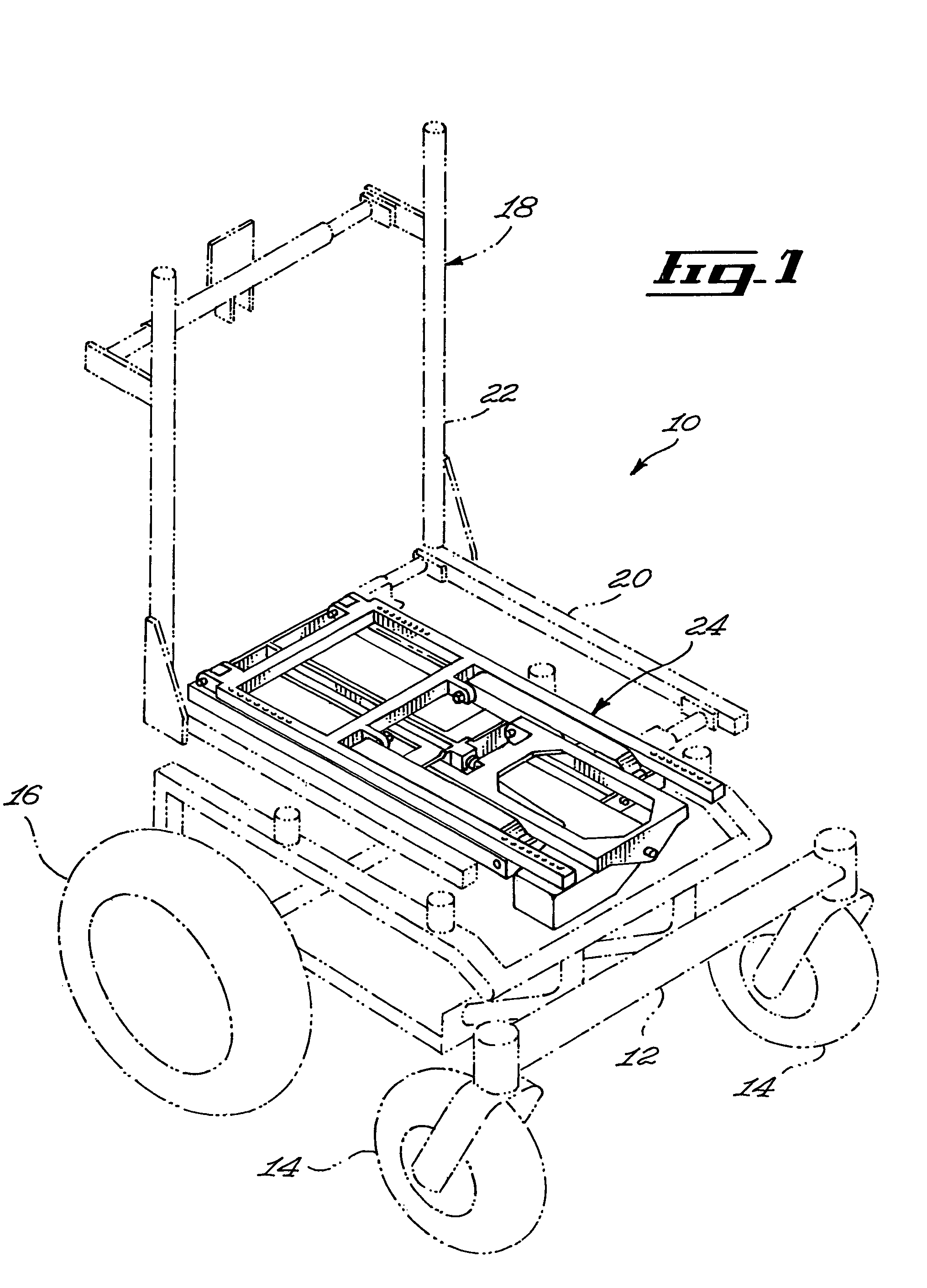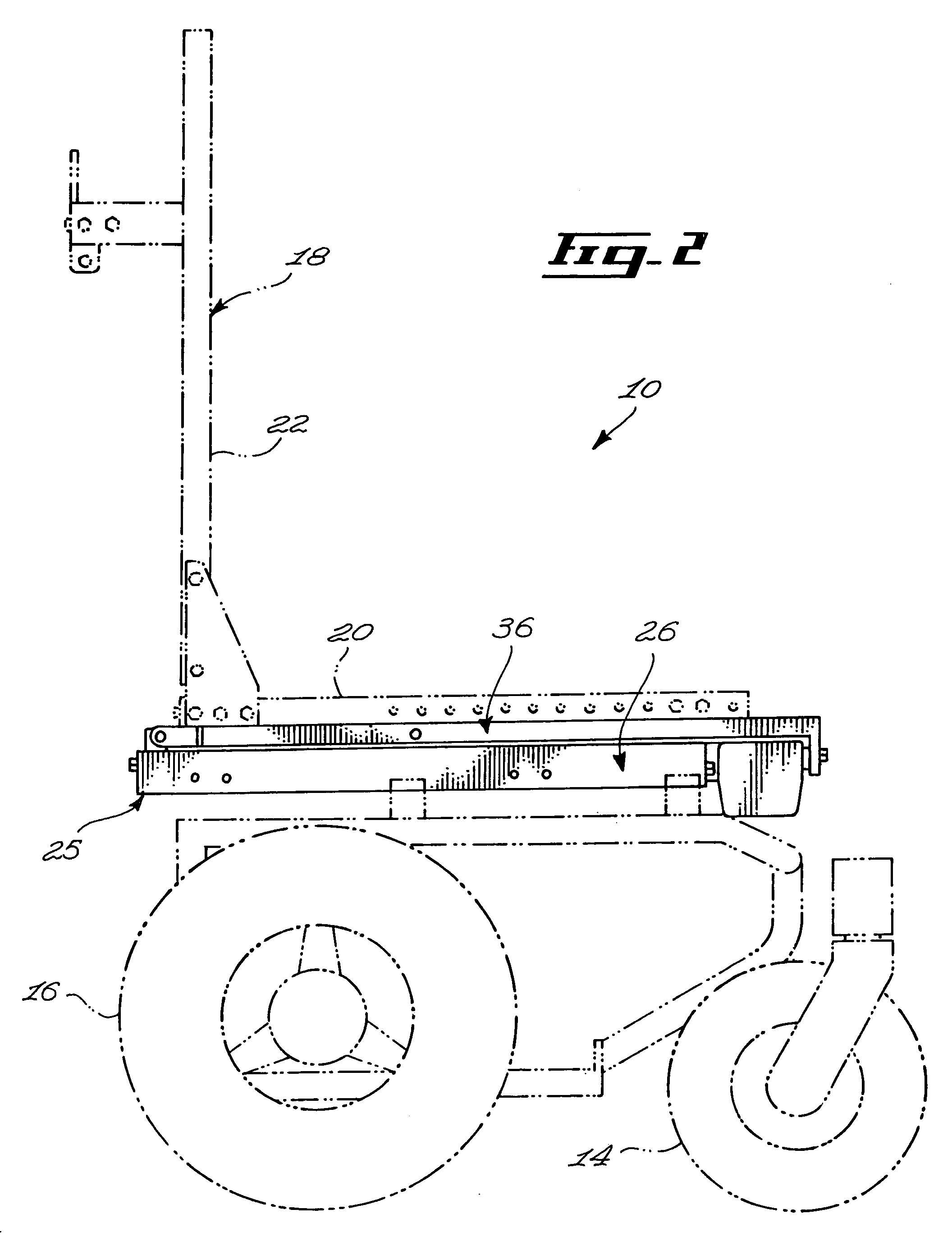Seat supporting assembly and wheelchair including same
a technology for supporting parts and wheelchairs, applied in the field of mobility assistance, can solve the problems of reducing the comfort of sitting in wheelchairs, the need to shift or move the body weight with respect, and the loss of supporting skin circulation, so as to reduce the risk of the wheelchair being overturned by gravity, and reduce the need for increasing the spacing
- Summary
- Abstract
- Description
- Claims
- Application Information
AI Technical Summary
Benefits of technology
Problems solved by technology
Method used
Image
Examples
Embodiment Construction
[0039]Referring to FIG. 1, there is shown a wheelchair in accordance with an embodiment of the present invention, generally indicated by the reference numeral 10. The wheelchair 10 typically includes a wheelchair frame, also referred to as a wheelchair base, shown in phantom lines and generally indicated by the reference numeral 12. At least three wheels are rotatably mounted to the wheelchair frame 12, the at least three wheels define a sustentation polygon. In the specific embodiment of the invention shown in the drawings, the wheelchair frame 12 is rollably mounted on a pair of front wheels 14 and a pair of rear wheels 16.
[0040]The wheel chair 10 also includes a seat generally indicated by the reference numeral 18. The seat 18 includes a seat frame defining a bench section 20 and a backrest section 22. The bench and backrest sections 20, 22 are adapted to support cushioning means (not shown in the drawings) for respectively bearing the gist of the weight of the intended user and ...
PUM
 Login to View More
Login to View More Abstract
Description
Claims
Application Information
 Login to View More
Login to View More - R&D
- Intellectual Property
- Life Sciences
- Materials
- Tech Scout
- Unparalleled Data Quality
- Higher Quality Content
- 60% Fewer Hallucinations
Browse by: Latest US Patents, China's latest patents, Technical Efficacy Thesaurus, Application Domain, Technology Topic, Popular Technical Reports.
© 2025 PatSnap. All rights reserved.Legal|Privacy policy|Modern Slavery Act Transparency Statement|Sitemap|About US| Contact US: help@patsnap.com



